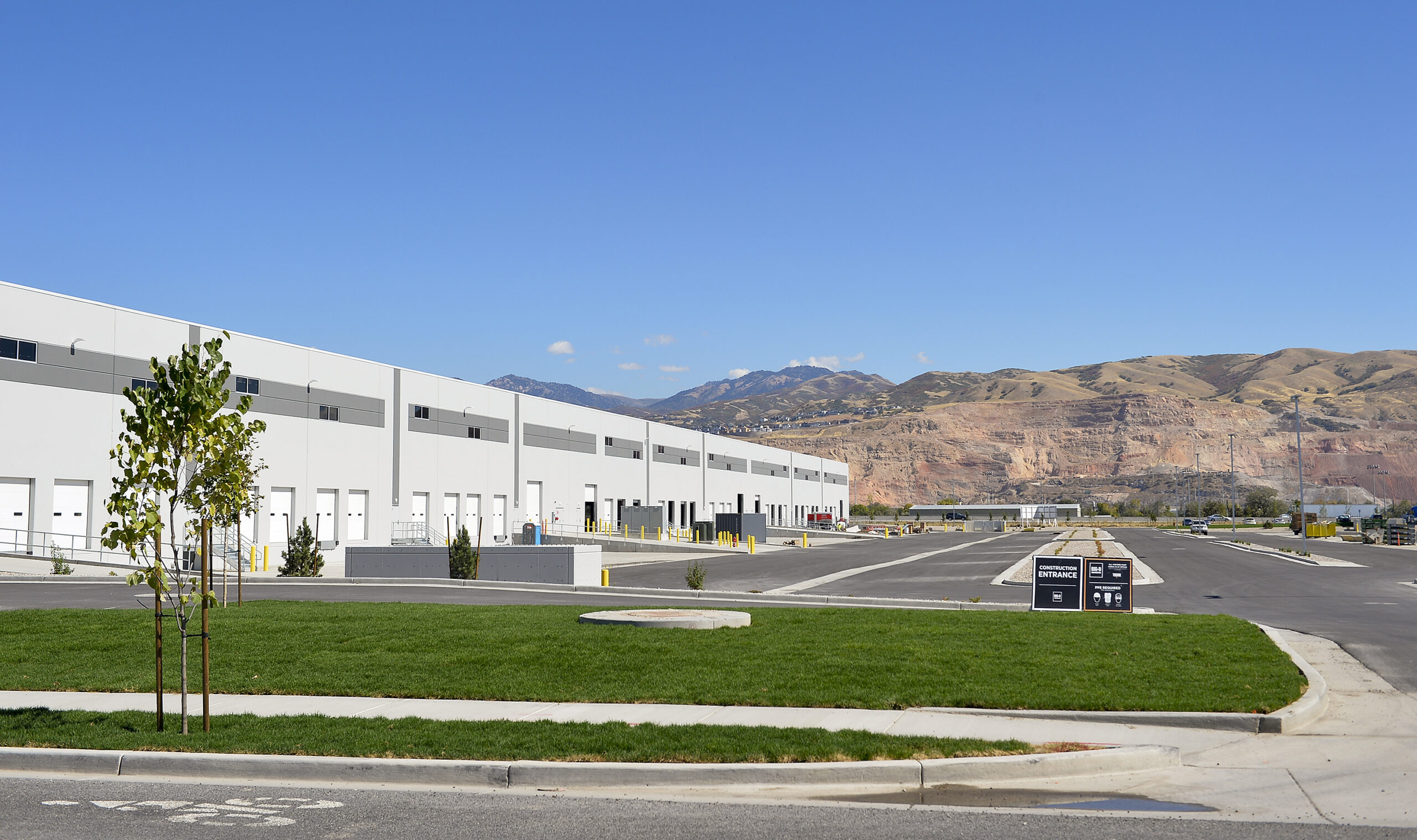
Ever since an industrial campus began to rise in the Northpoint area, on the far northern edge of Salt Lake City, Denise Payne said her life has gradually changed.
First it was semi trucks driving up 2200 West, the thin street that her home faces. Then, she said, developers started knocking on her door, with business proposals to turn her neighborhood — one of Salt Lake City’s last areas of agricultural life — into a more industrialized area.
Last week, the Salt Lake City Council approved an update to the Northpoint Small Area plan, one its proponents say will allow a more harmonious change among the farmhouses that have stood there for generations. The plan maintains the agricultural zoning on the east side of 2200 West, but residents say they still worry about the future, and the possibility that that land could transition to M-1, or light industrial.
The street, Payne said, “is turned into a construction zone. And now with a new master plan, all of the property on the east side is transitional. So it will, most likely as far as I’m concerned, probably turn into M-1 on the side where all the residents live at some point.”
Victoria Petro, the Salt Lake City Council member who represents the area, said it may be too late to prevent industry from moving into the area — but any developer trying to bring a light-industrial operation there will face tighter restrictions.
All solutions, Petro said, are retroactive, trying to correct the former Northpoint Small Area plan, approved in 2000, which allowed business parks to be built in this unique part of the city.
Payne said that allowing property owners to switch to M-1 near farms — with horses, goats and chickens — would go against the area’s agricultural nature. She said she worries the mix would diminish the value of her property. But her bigger fear is safety, with semis and dump trucks constantly circulating in front of her home.
Payne said she won’t ride her bike to go to the Legacy Park Trail, less than a mile away. She said she won’t walk around the area with her grandkids, or invite guests over.
“I don’t want to live there anymore now,” Payne said. “I can’t wait to sell our house and move someplace else, because we’re just going to get run over. It’s very dangerous right now, with everything that’s going on out there … We’re no longer a community. We’re just being pushed out.”
What’s in the plan?
A large piece of land on the west side of 2200 West is already zoned as a business park. To the south, there’s land that belongs to Salt Lake City International Airport; it’s expected to remain open space, a buffer for airport activity. On the east side of that road, the zoning is transitional, where agriculture and new industry would converge, said Krissy Gilmore, city planner for Salt Lake City.
Any light industrial buildings in that area, Gilmore said, would have to meet design standards to mitigate their impact — such as setbacks from homes, landscaping and dark sky standards.
The plan also includes the creation of a separate light industrial zone, specific to the Northpoint area, with more standards – such as landscaping regulations to protect the nearby wetlands.
“Essentially, the City Council doesn’t want to see really large, massive warehouses out there,” Gilmore said. “They’d like to see more small manufacturing and flex spaces. So the land use table would try and encourage those types of uses.”
The city hasn’t created that zone yet, Gilmore said. Until they do, any property in the transitional area that either annexes into the city or goes through a rezone would have to make a development agreement with the City Council, she said.
Petro said it’s unacceptable to have distribution centers – or anything that drives industrial traffic close to people who have been living an agricultural lifestyle — in that area. The development agreements would keep that from happening, she said.
“We can have an innovation park. Not everything has to be a truck sort of warehouse,” Petro said, “And we kind of don’t have a zone that promotes innovation parks.”
Current zoning rules, Gilmore said, would still allow larger uses — such as warehouses — that the city is anticipating. Planners, she said, are working to fine-tune those details.
The City Council did not follow the recommendations of the Planning Commission, which advised to create open distribution uses and to lower buffer requirements to 100 feet within light industrial areas and along the Jordan River.
In the final plan, the setbacks are 300 feet for wetlands and the Jordan River, 75 feet for canals and drains, and 65 feet for existing residential property.
City planners, following requests made in public comments, decided to leave 3200 West (north of 2100 North) unpaved, to limit its use, and mitigate possible impacts on the nearby wetlands. Developers aren’t allowed face that road, either.
Strict guidelines
Petro said she has a message for developers looking to build in the Northpoint area: Prepare for the new zoning requirements, and accept that a warehouse district will never be tolerated there.
“Anyone who wants to move before that zone is ready should be prepared for the strictest developer agreements, with enforcement like nobody’s business,” she said. “And we’re going to to be proactive in protecting this area in a way that we definitely haven’t been so far.”
The development agreement with the city, Petro said, would control the times of construction, when heavy machinery could be used, and expectations around responses to neighbors.
She said she would also advocate to make developers create a fund to pay for damage done to properties by the construction, as well as a neighbor advisory board for development projects.
Petro said creating a new more “sustainable and responsible” zone for the area unlocked a path forward for the plan.
“Now we’re just giving ourselves the time,” she said. “We know that change is coming to that area, what we want is to manage that change and make sure that it’s responsible, both in terms of the constituents who live out there and the ecosystem out there.”
Source : Salt Lake Tribune





